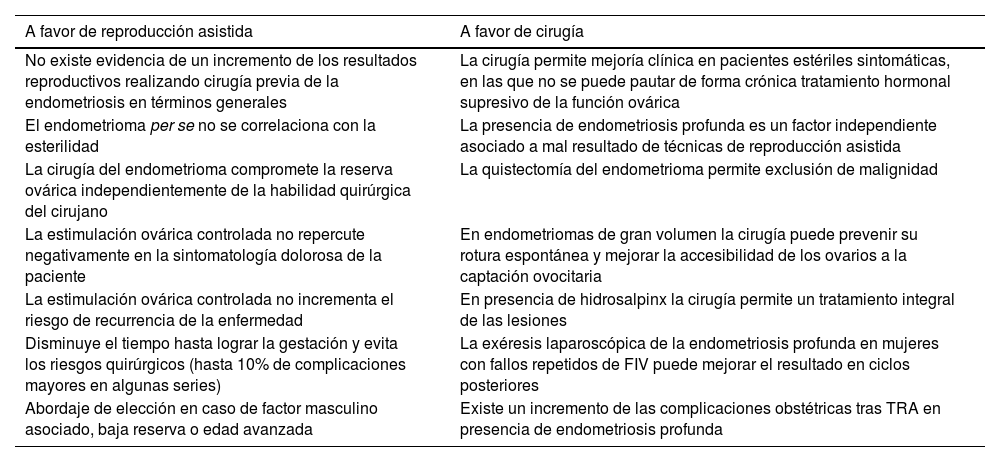
Edited by: Dr. Francisco Carmona y Dra. MªÁngeles Martínez Zamora
More infoLa endometriosis es una enfermedad muy compleja que limita la vida de las mujeres que la padecen en muchos ámbitos, tanto por la clínica dolorosa que provoca como por las complicaciones médicas que genera. Además, es capaz de provocar esterilidad por diferentes mecanismos.
En el presente trabajo pretendemos revisar el manejo de la paciente con endometriosis y esterilidad que tiene particularidades importantes respecto al tratamiento habitual de la endometriosis. La mayoría de los tratamientos médicos utilizados tienen efecto anovulatorio, por lo que impiden la gestación, y los tratamientos quirúrgicos pueden tener a su vez un efecto perjudicial sobre la reserva ovárica y el tiempo necesario para alcanzar la gestación. Por otro lado, las técnicas de reproducción asistida no siempre logran el objetivo deseado y pueden requerir la realización de cirugías asociadas, como en el caso de presencia de hidrosalpinx o de ovarios no accesibles a la punción folicular.
También realizamos una revisión crítica de la literatura médica y de las guías de las distintas sociedades científicas para tratar de establecer unos criterios generales sobre el abordaje de estas pacientes con endometriosis y esterilidad que, como regla general, deberían ser tratadas mediante técnicas de reproducción asistida. Se realiza un especial análisis de las situaciones específicas en las que se requiere un abordaje diferenciado con cirugía previa cuando está en peligro la función de algún órgano pélvico o en la endometriosis profunda.
Endometriosis is a very complex disease that limits the lives of women who suffer from it in many areas of their lives, both due to the painful symptoms it causes and the medical complications it generates. In addition, it is capable of causing sterility by different mechanisms.
In the present work we intend to review the management of the patient with endometriosis and sterility, which has important particularities with respect to the usual treatment of endometriosis. Most of the medical treatments used have an anovulatory effect, which is why they prevent pregnancy, and surgical treatments can in turn have a detrimental effect on the ovarian reserve and the time necessary to achieve pregnancy. On the other hand, assisted reproduction techniques do not always achieve the desired objective and may require associated surgeries such as in the case of the presence of hydrosalpinx or ovaries not accessible to follicular puncture.
We also carried out a critical review of the medical literature and the guidelines of the different scientific societies to try to establish general criteria for the approach to these patients with endometriosis and sterility, who as a general rule should be treated by assisted reproductive techniques. A special analysis is made of the specific situations in which a differentiated approach with previous surgery is required when the function of a pelvic organ is in danger or in deep endometriosis.













